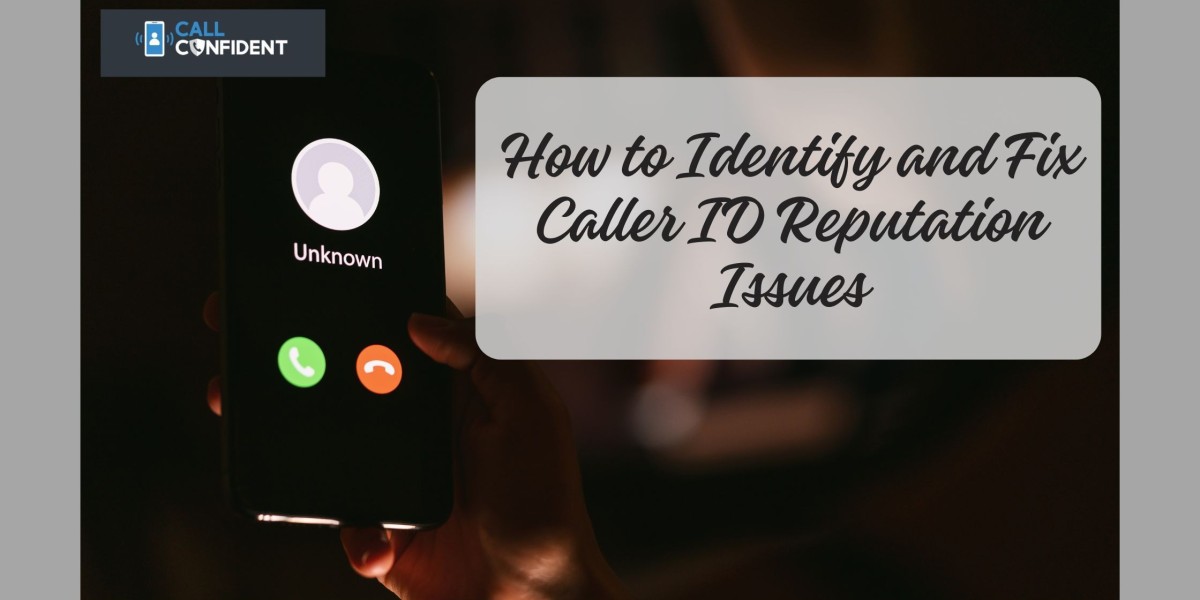In a world where communication is the backbone of business success, the reputation of your Caller ID plays a pivotal role. A poor Caller ID reputation can lead to calls being flagged as spam, reduced answer rates, and a tarnished brand image. Identifying and resolving Caller ID reputation issues is not just a matter of operational efficiency; it’s essential for maintaining trust and engagement with your customers.
Understanding Caller ID Reputation
Caller ID reputation refers to how carriers, analytics providers, and recipients perceive your phone numbers. It is influenced by factors such as call volume, call patterns, and recipient feedback. Numbers with a positive reputation are more likely to be answered, while those with a poor reputation risk being flagged as spam or robocalls.
Why Caller ID Reputation Matters
A poor Caller ID reputation can have far-reaching consequences for businesses, including:
- Decreased Answer Rates: Calls flagged as spam are often ignored by recipients.
- Customer Distrust: A spam label can erode trust in your brand.
- Lost Revenue: Missed opportunities from unanswered calls impact sales and customer retention.
- Regulatory Risks: Non-compliance with telecom regulations can lead to fines and further reputation damage.
Signs of Caller ID Reputation Issues
The first step in addressing Caller ID reputation issues is identifying them. Common signs include:
- Decreased Answer Rates: A sudden drop in answer rates may indicate your number is being flagged.
- Spam Complaints: Customers reporting your number as spam can hurt your reputation.
- Carrier Notifications: Alerts from carriers or analytics providers about your number’s status.
- Blocked Calls: Calls that fail to connect or are blocked outright by carriers.
- Negative Feedback: Customer complaints about call labeling or delivery issues.
Identifying Caller ID Reputation Issues
To diagnose reputation problems effectively, businesses should:
- Monitor Metrics: Track key performance indicators (KPIs) like answer rates, call durations, and call completion rates.
- Use Monitoring Tools: Employ Caller ID monitoring services to gain real-time insights into your number’s status across carriers and analytics providers.
- Analyze Feedback: Review customer feedback and complaints to identify patterns or recurring issues.
- Test Calls: Conduct test calls to different carriers and devices to check how your number appears.
- Engage with Carriers: Reach out to carriers for information on your number’s status and any flags associated with it.
Common Causes of Caller ID Reputation Issues
Understanding the root causes of reputation problems is crucial for effective resolution. Common causes include:
- High Call Volumes: Excessive outbound calls, especially within a short period, can trigger spam algorithms.
- Poor Call Practices: Repeated calls to the same numbers or ignoring customer preferences.
- Inconsistent Caller ID: Using unregistered or mismatched Caller ID information.
- Spoofing: Fraudsters impersonating your number for malicious activities.
- Outdated Data: Calling disconnected or irrelevant numbers.
Steps to Fix Caller ID Reputation Issues
Once issues are identified, the following steps can help restore your reputation:
- Register Your Numbers: Ensure your numbers are registered with major carriers and analytics providers to verify their legitimacy.
- Implement STIR/SHAKEN: Adopt this call authentication protocol to confirm the authenticity of your calls and prevent spoofing.
- Improve Call Practices:
- Limit call frequency to avoid triggering spam algorithms.
- Respect customer preferences and avoid repeated calls to uninterested parties.
- Use personalized and relevant messaging to engage recipients.
- Monitor Regularly: Continuously track your number’s status using Caller ID monitoring tools. Address any flags or issues as they arise.
- Maintain Data Hygiene:
- Update contact lists regularly to ensure accuracy.
- Remove disconnected or invalid numbers from your database.
- Engage with Carriers: Work with carriers to resolve any flags or negative labels on your numbers. Provide evidence of compliance with telecom regulations if required.
- Educate Your Team: Train employees on best practices for outbound calling and customer interaction.
Best Practices to Prevent Future Issues
Prevention is better than cure. To avoid future Caller ID reputation problems, businesses should:
- Use Consistent Caller ID Information: Ensure your business name, number, and details are accurate and consistent across all channels.
- Adopt Verified Calling: Leverage tools that allow recipients to see verified information about your business, such as logos and call purposes.
- Stay Compliant: Follow regulations such as the Telephone Consumer Protection Act (TCPA) and Do Not Call (DNC) rules.
- Monitor Customer Feedback: Actively seek and address customer feedback to identify potential issues early.
- Partner with Experts: Collaborate with Caller ID monitoring services to stay ahead of reputation risks.
Benefits of Addressing Caller ID Reputation Issues
Taking proactive steps to fix and maintain Caller ID reputation offers several benefits:
- Increased Answer Rates: A positive reputation ensures more customers pick up your calls.
- Enhanced Brand Trust: Maintaining a clean reputation fosters trust and credibility.
- Improved Communication Efficiency: Fewer blocked or ignored calls lead to better engagement.
- Regulatory Compliance: Adhering to telecom regulations mitigates legal risks.
- Long-Term Success: A strong Caller ID reputation supports sustainable growth and customer satisfaction.
Conclusion
Caller ID reputation is a vital aspect of modern business communication. Identifying and addressing issues promptly can make the difference between successful customer interactions and missed opportunities. By implementing robust monitoring tools, adopting best practices, and staying proactive, businesses can protect their reputation, improve answer rates, and build lasting trust with their customers. Investing in Caller ID reputation management is not just a necessity; it’s a strategic advantage in today’s competitive landscape.








